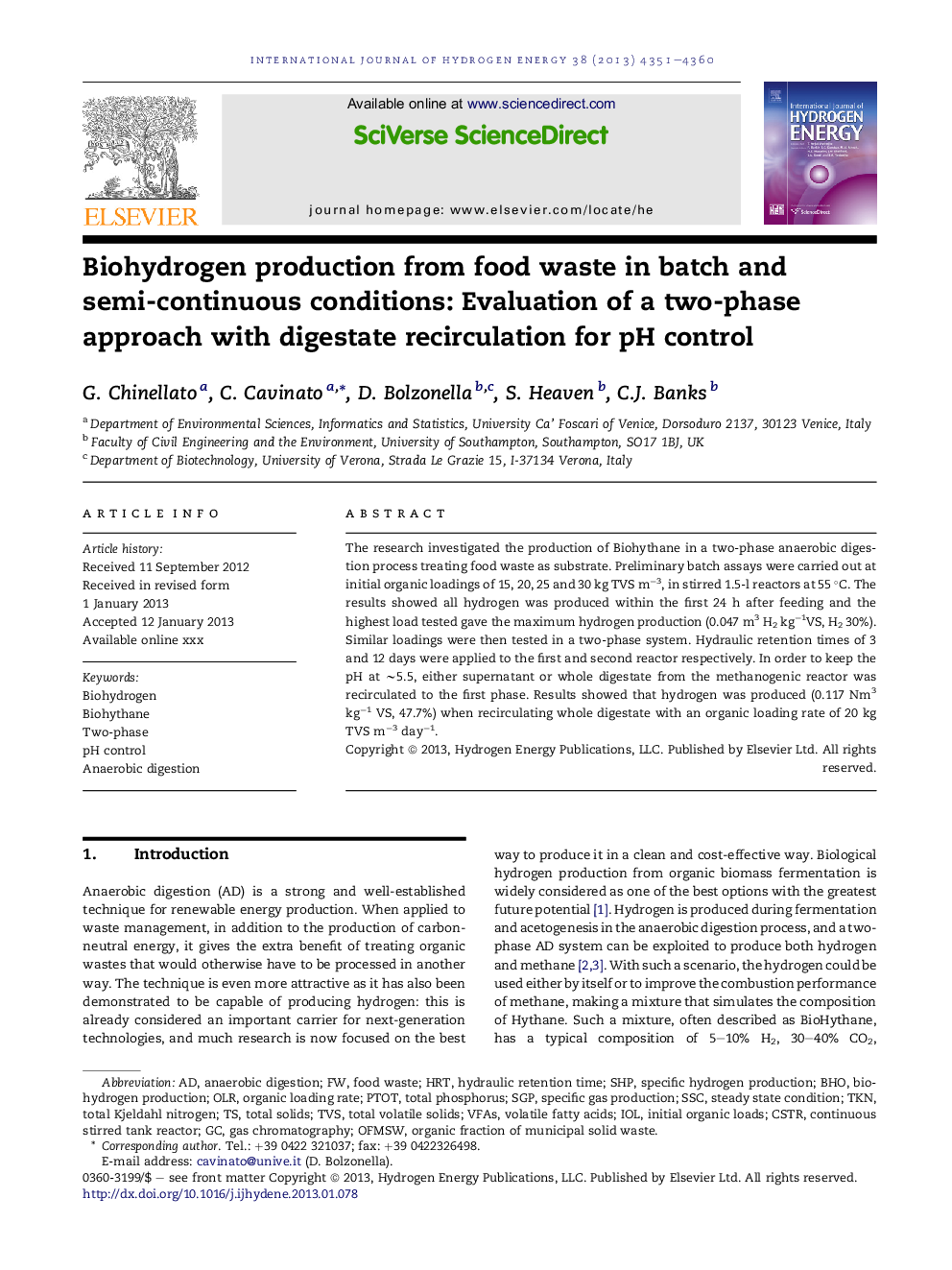| Article ID | Journal | Published Year | Pages | File Type |
|---|---|---|---|---|
| 1278128 | International Journal of Hydrogen Energy | 2013 | 10 Pages |
The research investigated the production of Biohythane in a two-phase anaerobic digestion process treating food waste as substrate. Preliminary batch assays were carried out at initial organic loadings of 15, 20, 25 and 30 kg TVS m−3, in stirred 1.5-l reactors at 55 °C. The results showed all hydrogen was produced within the first 24 h after feeding and the highest load tested gave the maximum hydrogen production (0.047 m3 H2 kg−1VS, H2 30%). Similar loadings were then tested in a two-phase system. Hydraulic retention times of 3 and 12 days were applied to the first and second reactor respectively. In order to keep the pH at ∼5.5, either supernatant or whole digestate from the methanogenic reactor was recirculated to the first phase. Results showed that hydrogen was produced (0.117 Nm3 kg−1 VS, 47.7%) when recirculating whole digestate with an organic loading rate of 20 kg TVS m−3 day−1.
► Semi-Continuous Two-Phase process to maximize energy recovery. ► Feasibility of concurrent H2 and CH4 production. ► In batch test H2 was produced within the first 24 h after feeding. ► Methanogenic sludge recirculation acts as pH controller in the H2 reactor.
